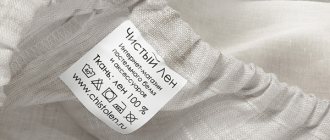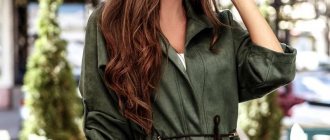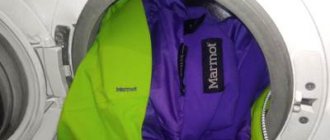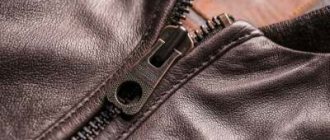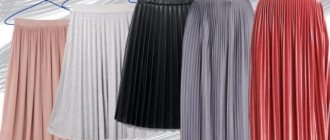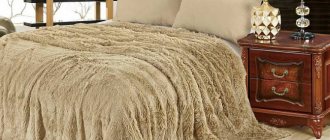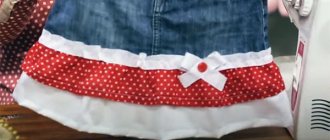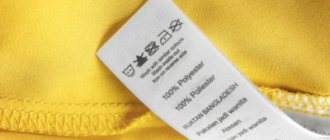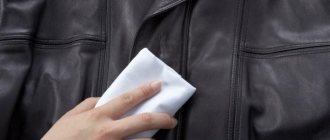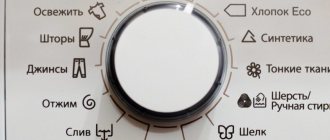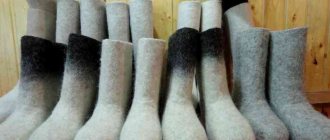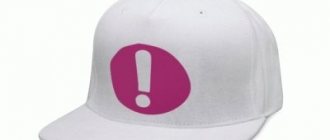A silk, knitted or chiffon pleated skirt requires proper care. Errors during washing, drying or ironing irrevocably spoil the appearance of such products.
But this is not a reason to refuse the pleasure of replenishing your wardrobe with a stylish and beautiful thing. If you follow simple rules, a pleated skirt will last for many years, maintaining its original lightness and structure.
We will tell you in the article how to wash a pleated skirt at home in an automatic washing machine and by hand.
Preparing for washing at home
The clothing labels indicate the manufacturer's recommendations for caring for pleated fabric: maximum permissible washing and ironing temperatures, the possibility of bleaching and spinning. When starting cleaning, you should study them carefully.
Before washing a pleated skirt, you need to:
- Assess the degree of contamination of the fabric and the presence of stains. If necessary, remove them using ready-made stain removers or home remedies.
- Determine the washing method (hand or machine), temperature conditions.
- Choose a detergent suitable for the specific material (powder, gel, capsules).
Before processing the pleats, it is important to secure the folds . To do this, they are carefully stitched horizontally along the bottom edge or vertically along the entire length. It is important to ensure that the thread is passed freely and does not tighten the fabric. After drying, it is removed.
This method of fastening is not suitable for skirts made of leatherette or very thin, delicate material. The needle may leave visible damage to the fabric. In this case, it is better to carefully roll (but not fold!) the skirt vertically and place it in a special bag or regular stocking.
How to wash pleated clothes by hand?
Skirts made of delicate materials, without significant contamination, can be washed by hand, following simple rules:
- The water temperature should be no higher than 30–35 degrees.
- Pleated fabric should not be rubbed, twisted or stretched too much.
- For washing, it is better to use gels or capsules, or carefully monitor the complete dissolution of the powder granules. Undissolved particles can leave streaks and discolor the fabric.
- Rinsing should be done thoroughly, changing the water at least 3 times.
Hand washing is the safest way to wash pleated fabric. For better cleaning and removal of contaminants, items should first be soaked in a soapy solution for 10–30 minutes.
Then:
Prepare a soap solution. Immerse clothes in it.- Carefully wash the skirt. Don't rub!
- Rinse in cool water with the addition of fabric softener. It will help remove static electricity and return lightness and airiness to delicate fabric.
- Don't squeeze!
- Place to dry: secure the item to a belt over a bathtub or basin and allow the water to drain. The fabric should dry naturally.
When worn actively, a pleated skirt should be washed quite often (after 4-5 wearings), avoiding the appearance of heavy dirt and stains.
Options for different body types
The sun flared cut was initially used as the style of skirts, but over time, designers proved that pleating looks great on other varieties:
- A-line - ideal for the “inverted triangle” figure, since it fits at the waist and widens downward. This visually adds volume to the hips. In addition, medium-length models visually lengthen the legs and make a few extra centimeters on the buttocks invisible.
- The pencil is a very feminine, but at the same time “demanding” model. Repeating the curves of the figure, it emphasizes the lines of the waist and hips. Pencil skirts made of corrugated materials can be recommended for slender girls with hourglass and rectangle body types, but even they should not wear a similar style if they cannot boast of perfectly straight legs and beautiful calves.
- The half-sun cut is suitable for any body type. It will help hide a wide pelvis for those with a pear shape and, conversely, will add volume to those with a T-shaped physique. An important point is that the choice of length of a ruffled semi-sun skirt is determined by the woman’s height. An individual silhouette can also be selected for overweight ladies, but only if they are tall.
- The sun is a traditional cut for pleated skirts made of lightweight materials. Such products will fit perfectly on both narrow and curvy hips, but in the latter case, the desired condition is a pronounced waist. The corrugated folds that beautifully fly apart when moving will emphasize it even more.
- With elastic - models for slim people. In this case, the corrugation visually lengthens the figure even more (if the elastic is tight and wide), especially if the top of the outfit is chosen correctly.
The asymmetrical cut of ruffled skirts is considered the most stylish, and with the right choice of shade and style, such models are suitable for both young girls and mature women
However, since such a thing definitely attracts attention, it is desirable that its owner can boast of slender legs
General rules for selecting ruffled skirts:
- the fragility of the figure will be emphasized by the combination of large and small folds in one product;
- both pleated and corrugated models made of lightweight fabrics will add volume and make the silhouette more proportional;
- those whom nature has endowed with curvy hips should not wear weightless, corrugated knee-length models. The best option would be a midi or maxi skirt made of thick fabric with large pleats. In particular, a ruffled model with a smooth yoke will help add a slim waist and hips.
Pencil
With elastic band
half sun
Sun
Trapezoid
Processing in an automatic machine
Clothes made from pleated fabric can be cleaned in an automatic machine, provided there is a gentle mode and the ability to completely turn off the spin function. In this case, the use of a special laundry bag is mandatory.
The skirt cannot be stuffed into a bag in a shapeless lump. It must be carefully rolled into a roll, being careful not to wrinkle the folds.
If your machine provides pre-soaking, you can use this option. This treatment is safe for fabric, subject to the following rules:
delicate operating mode of the machine;- minimal water heating (up to 30 degrees). Preferably wash in cold water;
- spin must be turned off or not exceed 400 rpm (for polyester items);
- It is better to choose gel detergents marked “For delicate fabrics”;
- An additional rinse mode is acceptable, but with the obligatory use of fabric softener.
Drying is carried out in the standard way: you need to fasten the skirt to the belt and allow the water to drain. Clothes made of knitwear or wool can be blotted with a terry towel, being careful not to damage the folds.
The video will show you how to wash a pleated skirt in a washing machine:
What types of pleated skirts are there?
Ruffled skirt. And this is not surprising, because it not only conquered the world’s catwalks, but also became part of the basic wardrobe. You can combine pleated fabric with almost anything. Voluminous sweaters, jackets, shirts, sneakers and high boots - all this looks stylish in combination with flowing chiffon.
And pleated not for office or school clothes made of fine wool, acrylic or polyester - a classic that never loses its relevance.
Advice For school uniforms, choose thin woolen fabric containing acrylic, viscose, polyamide or silk, no more than 50%. Polyester is stuffy and only suitable for skirts. Sundresses and trousers made of this material will make you feel stuffy in the classroom and cold outside.
The pleats on the pleated fabric can be either pronounced or slightly noticeable. Styles are classified by length, but a skirt below the knee is considered relevant. Designers enhance the accent and decorate models with belts, embroidery, unusual patterns and rhinestones. The material can also be very different: from chiffon and polyester to eco-leather.
How to dry?
Improper drying of pleated clothing leads to creases and deformation of the folds.
It is important to remember that such things cannot be stretched, thrown over a rope, folded across or crumpled.
Immediately after washing you need:
- fasten the skirt to the belt on trouser hangers with clothespins;
- allow the water to flow freely into the bathtub or basin;
- then you can take the item out into the fresh air, but avoiding drafts;
- In order for the fabric to straighten out better under its own weight, the skirt should be shaken periodically.
The wet material must be carefully smoothed out with your hands, forming folds. This will help avoid steaming the dried product.
How to stroke?
If dried properly, chiffon and silk skirts will not need to be ironed. The fabric will stretch and expand under its own weight.
Skirts made from heavier materials are ironed using the lowest possible heat from the iron. Each section is carefully worked out, moving along the folds .
Synthetics are ironed from the wrong side, placing gauze, thin fabric or a special mesh for ironing.
There should be no creases or marks left from the iron . When ironing pleated clothing, you must carefully monitor the formation of clear folds, without displacement.
Place a crumpled leather or denim skirt in the bathroom over a basin of boiling water, close the door tightly and leave for 30–60 minutes. Steam easily smoothes the material without damaging the pleated folds.
Read more about how best to iron a pleated skirt in our separate article.
Ironing
- It will be much easier to iron if it is not completely dry; in this situation, additional material will be needed.
- Proven conditions for effective, successful ironing:
- iron only from the wrong side;
- if there is a lining, it must be ironed separately;
- do not remove the basting threads until the end of the process.
- The best option is steam treatment. If your iron does not have such an option, it is important to select a special heating mode to match the material.
The ironing process depends on the type of material:
- knitwear is ironed through gauze in several layers, it is best to steam it;
- natural or artificial silk fabric - iron only from the wrong side, you do not have to steam or wet the other fabric, otherwise a stain may remain.
You should be careful with synthetics; iron them through gauze and inside out. To work out the folds, you can use a steamer; it can remove the smallest details. Before the process, you should read the label, because some pleated fabrics cannot be ironed.
Stain removal and whitening
The use of bleaches is only possible if there is a corresponding symbol on the product label. Chlorine-containing products can cause irreparable harm to colored items, as well as skirts made of chiffon, silk, and wool.
Stains and complex dirt from a pleated skirt must be removed immediately after they appear.
Fat
A fresh grease stain needs:
- Cover with talcum powder, baking soda, starch, and baby powder. After absorption, gently shake off.
- If there is a trace left, fill it again.
- Wash in any way.
Difficult stains should be carefully treated with dishwashing detergent:
- Apply a few drops to the damaged area.
- Leave for 20–30 minutes.
- Rinse under warm water. Wash the skirt completely.
Blood
Fresh drops needed:
- blot with a napkin soaked in hydrogen peroxide or lemon juice;
- leave for 5–7 minutes;
- rinse with cool water.
You can apply a paste of baking soda and vinegar to dry stains.
Tea, coffee, wine
Drink stains can be removed:
- Citric acid solution (1 tsp per 100 ml): pour onto the damaged area, leave for 20 minutes. The product is effective against stains from red, white wine, juices, compotes.
- Table vinegar (9%): moisten a napkin and blot away any drops of tea or coffee.
- Glycerin with vodka (1:3): apply to traces of champagne or wine, leave for 15 minutes, rinse under running water.
After removing stains, the item must be washed completely in cool water.
Lipstick, cosmetics
Traces of cosmetic products can be removed with medical alcohol:
- apply to a cotton pad;
- Gently blot the stain from the inside out, after placing a clean napkin or paper towel on the front side.
Similarly, you can use vodka or ammonia.
Ink
Ink can be removed from white items with a solution of hydrogen peroxide and ammonia (1:1).
A universal remedy for any stains is ordinary laundry soap . It should be applied liberally to the contaminated area and left for 10–60 minutes (depending on the complexity of the damage). Then rinse the clothes thoroughly and wash them in any way.
When choosing a stain remover, you need to take into account the material from which the item is made, as well as its color. When in doubt, it is better to use delicate store-bought stain removers.
To remove a ballpoint pen stain:
- Apply lemon or onion juice to the damaged area.
- After 15–20 minutes, rinse with running water.
- Wash by hand or in a washing machine.
Dry cleaning
When creating pleated fabric, manufacturers use a special impregnation that holds the folds and prevents them from straightening out. The ability of the material to maintain a given shape depends on the quality of impregnation.
Most often, pleated fabrics tolerate home washing well . Before cleaning a new item for the first time, you should wet a small area and evaluate how the fabric behaves.
If the fold becomes fuzzy or unraveled, the skirt should not be washed.
In this case, only dry processing is suitable, which can only be done efficiently by dry cleaning. You should not neglect the services of professionals when persistent, complex stains appear . Home methods for removing stains are not always effective and can lead to fabric damage or deformation of folds.
Recommendations and rules for care
To prevent the skirt from losing its original appearance, it is important to properly care for it and follow the recommendations of experts and manufacturers:
- You need to carefully study the label on your new clothes and save it.
- The temperature restrictions for washing and ironing should not be neglected.
- Drying and storing the pleated skirt is carried out only in a vertical position with a clip-holder on the belt. It should not be thrown over a crossbar in a closet or on a hanger, placed on a shelf or crumpled.
- Do not allow pleated clothing to become heavily soiled. It is very difficult to remove stains without damaging the folds.
- There is no need to avoid professional help. Only dry cleaning can remove complex stains without spoiling the texture of the fabric.
If the folds have become fuzzy, they can be fixed at home using one of the following methods:
- rub the folds with soap;
- then, carefully fold and iron with a hot iron;
- using a spray bottle, spray a solution of vinegar and water (1:1);
- after this, carefully iron each fold through a thin cloth or gauze;
- use gelatin or starch - you need to prepare a solution, moisten gauze and iron the skirt from the wrong side.
But do not forget that fixing folds before washing most often helps to avoid such difficulties.
Features of the style
Corrugation is a subtype of the no less popular pleated skirt. The word “plisse” itself means “fold” in French. Many people confuse corrugated and pleated. The difference is that the second models are sewn from folds with a width greater than the hem, which gives the impression that they are tightly stacked on top of each other. Usually silk, taffeta, and chiffon are used to make them. On corrugated models, the folds have the same hem and width, and in addition, they are often located at an angle, creating a visual accordion effect.
Ruffled skirts are feminine and can highlight the advantages and soften the disadvantages of almost all body types. Women can wear them regardless of age, at any time of the year. This style is appropriate in a variety of styles; you just need to correctly combine it with other elements of clothing and accessories.
